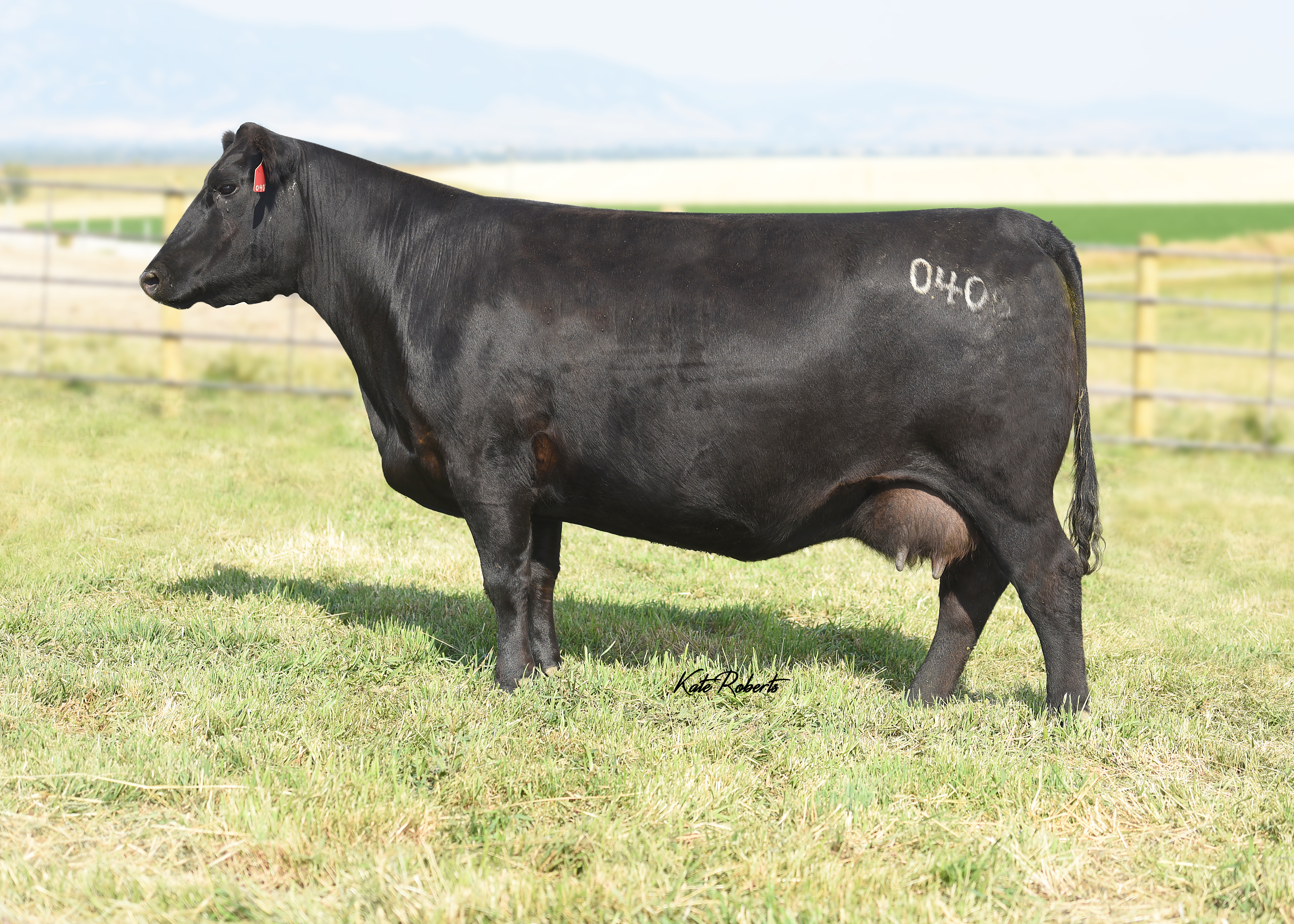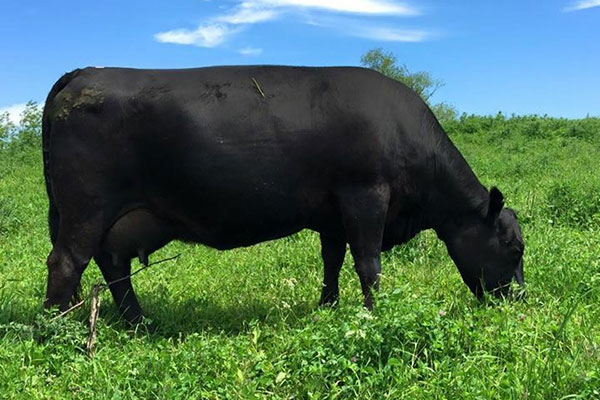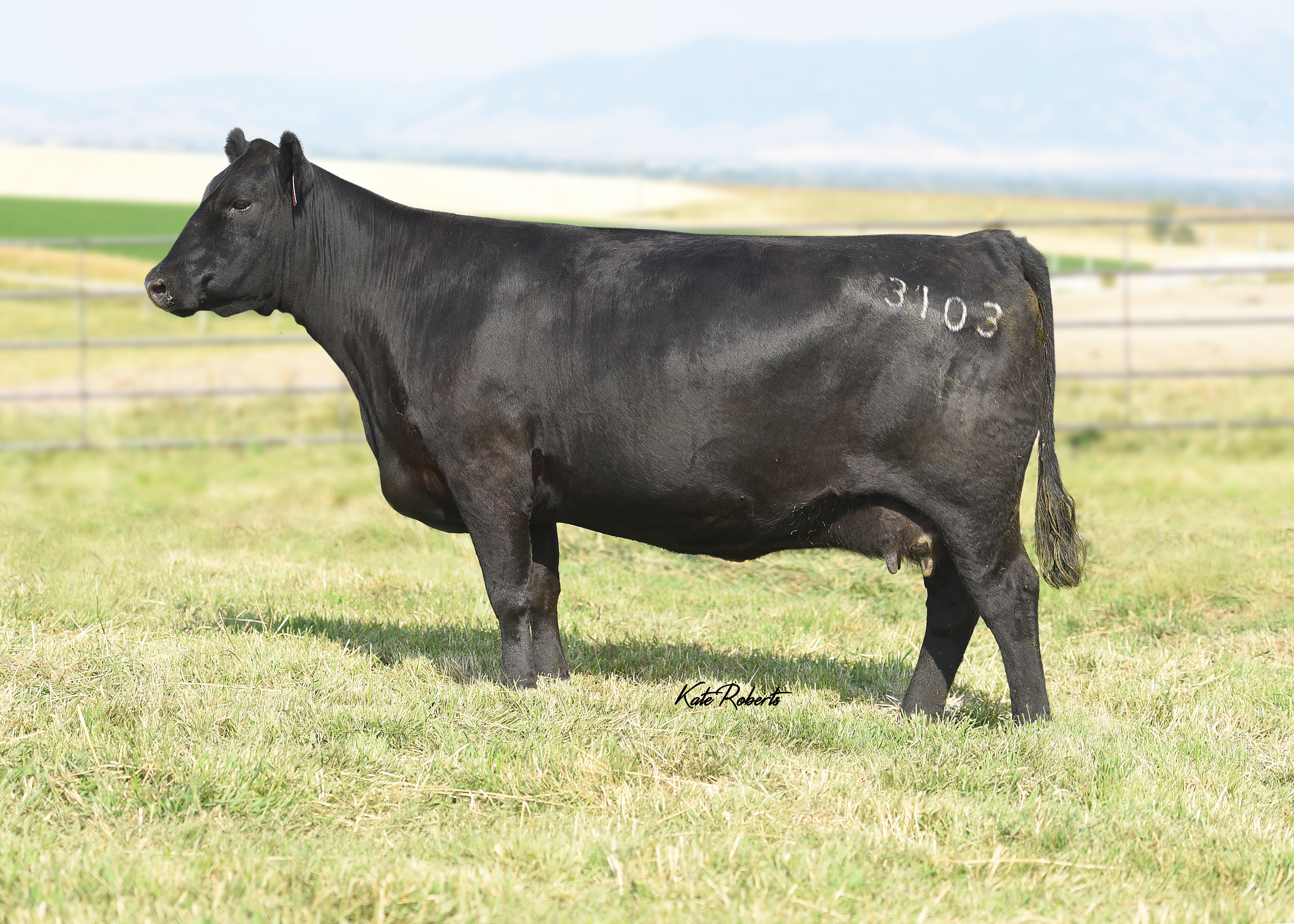Cow Herd
Fertility
We understand the high costs of developing heifer calves into producing cows. Our goal at Van Dyke Angus is to produce 8 – 9 year old cows that just seems to do everything right.
Structural Soundness
Cattle with bad feet have run rampant across the country for far too long! Our goal is to eliminate structural problems and limit the exposure of the commercial cattlemen to these issues. Unsound cattle have no place in any breeding program.
Disposition
We firmly believe that there is no animal worth getting hurt for. Gentle cattle preform better in the herd as well as in feedlots. This starts with the way that we handle the cattle and we place great emphasis on docility in our breeding program.
Our Priorities
Here at Van Dyke Angus Ranch, the cow is at the heart of all that we do. We have a firm belief that we must breed and select for fertile, structurally sound females that work for the commercial cattleman, cattle that keep them profitable. No matter what your goals are in the cattle industry, there are some factors that affect all of us, mainly fertility, mothering ability, structural soundness and disposition. All of these traits factor into the longevity of the cow, and longevity more than anything else will determine the bottom line of the commercial cattleman. We all understand the high costs of developing heifer calves into producing cows. Each and every one of them is a loss if they have to be sold in the first few years of production due to issues with fertility, mothering, disposition or structure. That’s what makes culling for these traits right off the bat so important. If we don’t, it negatively affects our bottom line. We all want to have the 8-9+ year old cows that just seems to do everything right.
Let’s start with fertility and take a look at the importance of proper culling and breeding for a fertile cowherd. Fertility is one of the least heritable traits that there is, but that is exactly what makes it so important. As Lee often says, “You’re not going to make an infertile cow into a fertile one, so you had better cull the infertile ones.” For over 15 years we have lived by that mantra, holding all of our cows to a strict 42-day calving interval, no excuses. There have been many studies that prove the importance of this, including one by the University of Nebraska that showed that cows calving in the first 42 days of the calving season made up to 25% more money than the cows calving later in the season. We all understand the disadvantage we face with late-calvers and the struggles of trying to move them up come breeding season. Continuous culling of late-calving cows will increase fertility and improve uniformity in your calf crop. Culling in this manner also helps insure that the replacement heifers that are kept are out of early calving cows and have the best chance of staying for the long haul. Cattle that are able to stay in this type of calving window also tend to be very maternal cattle.
Maternal traits are what made Angus famous in the first place. The mass exodus from other breeds to the “Business Breed” was largely due to a few simple factors that some people seem to have forgotten. The Angus cow became famous for her ability to breed on time, calve on her own, take care of and raise a big calf. That’s what we all want from any cow, but Angus did it best. Recently, many breeders have become caught up in the mad dash for EPD’s and carcass traits with a disregard for the maternal traits that made the Angus cow famous in the first place. One very important maternal trait is mothering ability, and here at VDAR we have a zero-tolerance policy for any cow that doesn’t want to be an excellent mother.
One of the big issues, if not the biggest in the Angus breed, and the cattle industry as a whole is structure. Cattle with bad feet have run rampant across the country for far too long! It is disgraceful that we have allowed such a structure problem to propagate over the past decade or so in the blind desire to breed extreme EPD’s in specific areas. There is no excuse for perpetuating genetics of cattle that have bad feet. That is not a leniency that we have as a registered producer. We must strive to improve the genetics that we sell to the commercial cattleman, so we must make ever effort to eliminate structural problems and limit the exposure of the commercial cattleman to these issues. The negative relationship of structural problems and fertility is fairly obvious. If cows break down and go lame, they cannot travel and forage, meaning they will not be able to maintain their nutritional intake at a rate to continue to function at a profitable level. Turn out a bull with bad feet and good luck preg-checking. That would be like you trying to run a marathon with a ball and chain shackled to your leg. Cattle that can’t walk and travel properly must be culled, no excuses! Pushing cattle in the feedlot can sometimes contribute to poor structure, but ultimately it is a genetic issue, and one that must be taken seriously in order for the commercial cattleman to have any level of confidence in the Angus breed as a whole.
Van Dyke Angus Ranch
Breeding functional, structurally correct cattle for the commercial cattleman.



